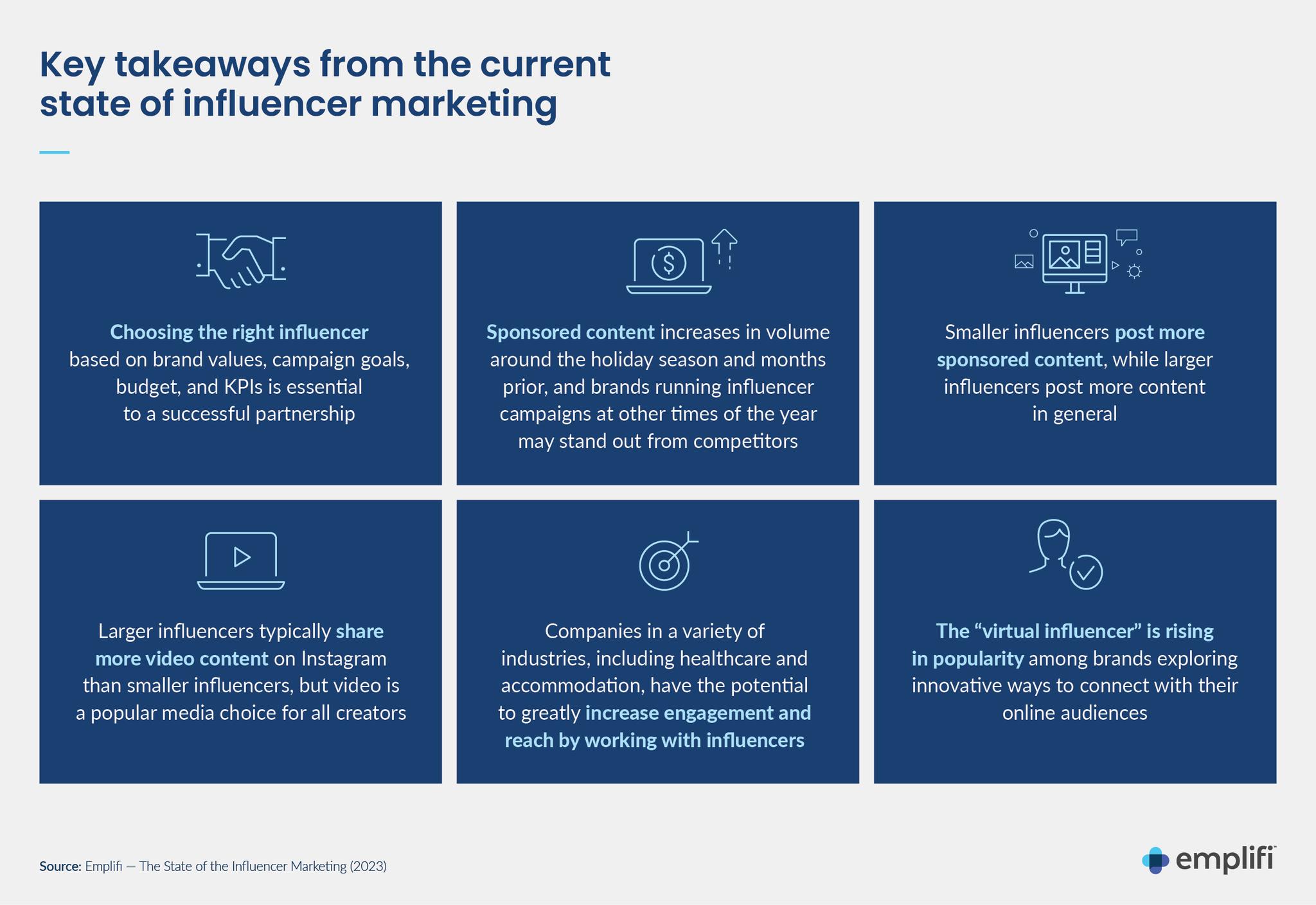Influencer marketing is a cornerstone of modern marketing, but brands have actually been doing a variation of it for a very long time. Celebrities have long promoted products, from Michael Jordan encouraging a generation to “Be Like Mike” to Matthew McConaughey seemingly driving on an endless road trip in a Lincoln.
What’s changed in the rise of influencer marketing is the opportunity to reach specific communities. As brands seek new avenues to reach their target audiences, influencers offer an accessible entry point into these communities that may have your next customer.
There’s great reach in Taylor Swift promoting your product – even if indirectly – but depending on what your brand offers, the impact could be greater with an influencer with an audience or purpose that’s more aligned with your company.
There are a lot of things to look for in a social media influencer when choosing the best fit for your business. Influencers come in all shapes and sizes — including animals and avatars — and, for some industries, there are seemingly endless options.
Let’s look at the pros and cons of macro-influencers vs. micro-influencers to find the best option for your brand.

What is macro-influencer marketing?
Macro-influencer marketing is the strategy of collaborating with influencers who have a large following, typically ranging from several hundred thousand to millions of followers, to promote products, services, or campaigns. These influencers have gained significant recognition on social media platforms and have a broader reach, in many cases, than some brands.
Due to their vast follower count, they often command higher fees for their promotional services. Brands leverage macro-influencers to achieve greater visibility, tap into established audiences, and generate higher engagement on a mass scale.
But there are considerations. Brand authenticity is more important today than ever before, and the authenticity of endorsements from macro influencers may sometimes be perceived as less genuine than those from influencers with smaller followings.
Pros of macro-influencers:
Broad reach: Brands can expect massive exposure from their vast following.
Enhanced credibility: Associating with a known face can boost a brand's trust quotient.
High engagement: Emplifi data suggests that collaborations with influencers reach audiences over 15x times more and generate a 4.9x increase in engagement than the brands who don’t partner with influencers.
Cons of macro-influencers:
High cost: Collaborations often come with a hefty price tag.
Less authenticity: Larger influencers might sometimes prioritize commercial interests over genuine endorsements.
Brand perception: Sometimes, it doesn’t work out for the brand if the promotional effect misfires in some way.
What is micro-influencer marketing?
Micro-influencer marketing is the practice of partnering with individuals who have a relatively smaller, yet highly engaged and niche-focused following on social media platforms to promote products, services, or campaigns. Micro-influencers typically have follower counts ranging from approximately 1,000 to 100,000.
While their reach is more limited compared to macro-influencers or celebrities, micro-influencers often have a closer, more genuine relationship with their audience. This can result in higher engagement rates and perceived authenticity in their endorsements. Brands collaborate with micro-influencers to tap into specific communities or demographics, leveraging the trust and rapport these influencers have built with their followers.
Due to their size, collaborations with micro-influencers can also be more cost-effective, making them a popular choice for smaller businesses or campaigns targeting niche audiences.
Micro-influencers are, more or less, the person next door (although that person could just have much better TikTok dance moves than your other neighbors). Their more modest follower counts (ranging from a few thousand to about a hundred thousand) make them relatable and trustworthy.
Pros of micro-influencers:
Genuine endorsements: Their promotions feel more like genuine recommendations than paid advertisements.
High engagement rates: They typically achieve higher engagement rates than their macro counterparts, particularly on Tiktok where the difference in active engagement between micro- and macro-influencers is 18% to 5%, respectively.
accounting for 91% of engagement on sponsored posts on Instagram.
Cost-effective: Collaborations are considerably cheaper, offering better ROI.
Cons of micro-influencers:
Limited reach: Their follower counts are comparatively lower, which certainly can affect reach.
Requires more management: Engaging multiple micro-influencers to match the reach of a macro influencer requires additional coordination or a dedicated influencer marketing solution.
Sponsored overload: Smaller micro-influencers — up to 10,000 followers — tend to post 67% more sponsored content, according to Emplifi data, which can impact audience engagement.

Source: Emplifi Report: The State of Influencer Marketing
Which type of influencer should your brand choose?
Your decision should hinge on your brand's immediate needs.
Visibility over conversions: If you aim for wide reach and have the budget, celebrities or macro-influencers are your best bet.
Conversions over reach: If you prioritize engagement and conversions, micro-influencers, with their genuine endorsements and high engagement rates, are the answer.
While each type of influencer has distinct advantages, the crucial aspect remains to align their brand and audience with your business objectives. And when in doubt, test relationships with both.
How to get started with influencer marketing
The dynamic landscape of influencer marketing requires brands to adapt and evolve. It's not about choosing one over the other but optimizing the mix to suit your business goals. As the influencer marketing realm continues to mature, it's those brands that tailor their strategies effectively that will truly thrive.
Depending on your industry, the impact is clear if a tailored and thoughtful marketing plan involving influencers is deployed. Healthcare brands, for example, see a potential increase of 18 times compared to other companies in their industry, according to Emplifi research.

If your brand is interested in exploring any type of influencer, consider a demo of Emplifi’s influencer marketing tool. We’ll help you understand how to manage these types of programs and build brand awareness, drive conversions, and track ROI.
Editor's Note: This is an update of an article originally published in June 2018. All sections have been updated with recent research and insights.



































